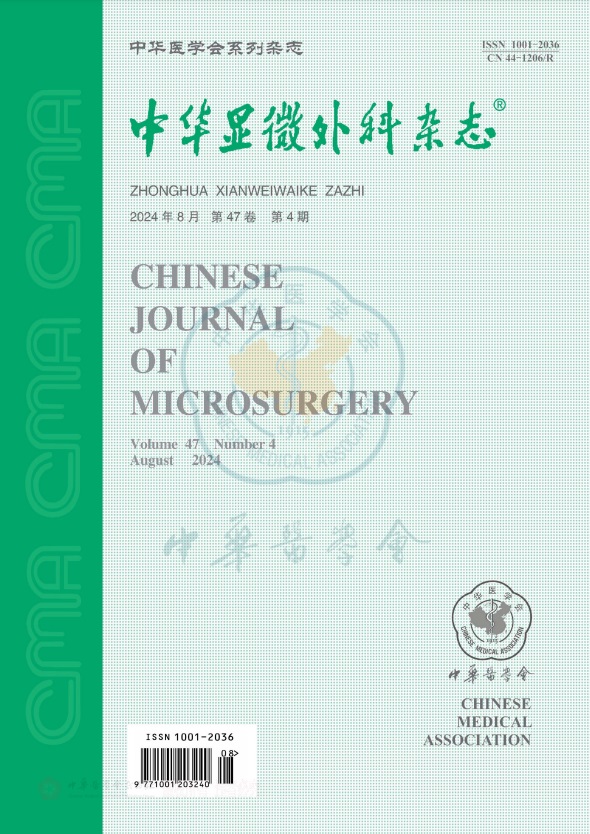A preliminary study on B -mode ultrasonic evaluation of muscle recovery after functional gracilis muscle transplantation
引用次数: 0
Abstract
Objective To investigate the value of the B-mode ultrasound method for muscle recovery after transplantation. Methods From January, 2009 to January, 2014, 35 patients of functioning free gracilis muscle transplantation for brachial plexus injury were involved. Using B-mode ultrasound to determine the cross-sectional area (CSA) of transplanted gracilismuscle at rest and contraction state. The contraction ratio (CR) and the muscle bulk ratio (MBR) was calculated based on the CSA. Then the CR and MBR were analysised statistically with manual muscle strength and joint range of motion (ROM) to investigate the correlation. Results The followed-up time was 8-24 months, averaged of 22.4 months. The CR of the transplated muscle was (1.23±0.15), which was significantly correlated with muscle strength and joint ROM (P 0.05). There was no statistically significant difference in muscle strength and ROM between patients with MBR greater than 1 and those with MBR less than 1 (P= 0.054, P=0.284, respectively). Conclusion The transplanted muscle recovery can be quantitatively reflected by the CR. CR enlargement of the transplanted gracilis muscle indicated a better recovery of muscle contraction function. MBR is not suitable for evaluating function recovery of transplanted muscles. Key words: Gracilis; Functional muscle transplantation; B-mode ultrasound; Muscle contraction; Muscle strengthB型超声评价功能性股薄肌移植后肌肉恢复的初步研究
目的探讨b超在移植后肌肉恢复中的应用价值。方法对2009年1月~ 2014年1月收治的35例臂丛神经损伤患者行游离股薄肌移植治疗。应用b超测定移植股薄肌在静止和收缩状态下的横截面积。根据CSA计算收缩比(CR)和肌肉体积比(MBR)。然后将CR、MBR与手肌力、关节活动度(ROM)进行统计分析,探讨相关性。结果随访8 ~ 24个月,平均22.4个月。转肌CR为(1.23±0.15),与肌力、关节ROM显著相关(P < 0.05)。MBR > 1组与MBR < 1组肌力和ROM比较,差异均无统计学意义(P= 0.054, P=0.284)。结论移植后肌肉的恢复情况可通过CR定量反映,移植后股薄肌CR增大表明肌肉收缩功能恢复较好。MBR不适用于评价移植肌肉的功能恢复。关键词:股草;功能性肌肉移植;b型超声波;肌肉收缩;肌肉力量
本文章由计算机程序翻译,如有差异,请以英文原文为准。
求助全文
约1分钟内获得全文
求助全文
来源期刊
CiteScore
0.50
自引率
0.00%
发文量
6448
期刊介绍:
Chinese Journal of Microsurgery was established in 1978, the predecessor of which is Microsurgery. Chinese Journal of Microsurgery is now indexed by WPRIM, CNKI, Wanfang Data, CSCD, etc. The impact factor of the journal is 1.731 in 2017, ranking the third among all journal of comprehensive surgery.
The journal covers clinical and basic studies in field of microsurgery. Articles with clinical interest and implications will be given preference.

 求助内容:
求助内容: 应助结果提醒方式:
应助结果提醒方式:


